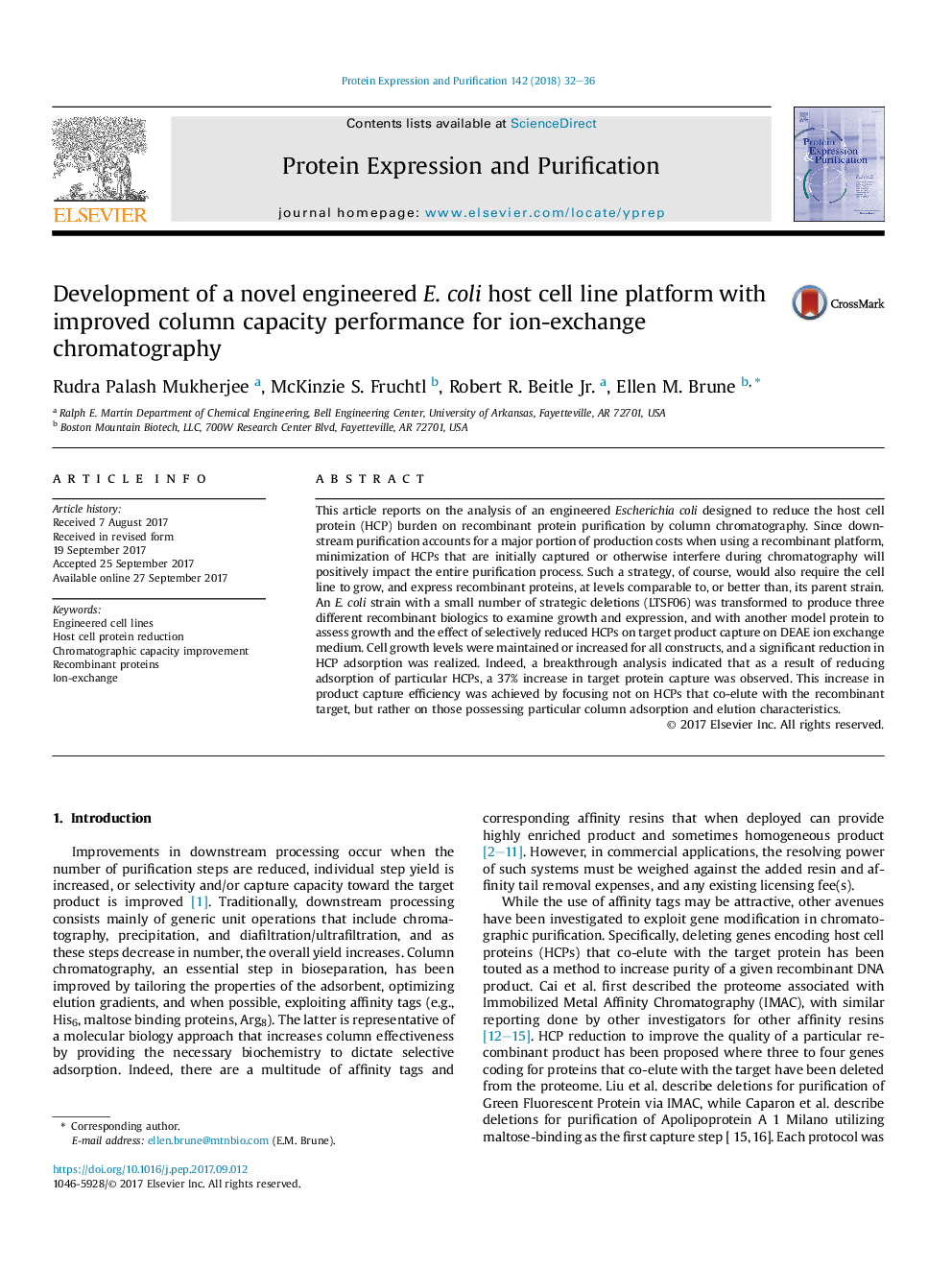| Article ID | Journal | Published Year | Pages | File Type |
|---|---|---|---|---|
| 5515956 | Protein Expression and Purification | 2018 | 5 Pages |
â¢Antimicrobial peptide fused to GFPuv expressed using engineered cell line.â¢Engineered cell line has comparable growth characteristics during fed batch fermentation.â¢DEAE column capacity increased by 38% when compared to wild type cell line as a result of deletion of 6 genes.
This article reports on the analysis of an engineered Escherichia coli designed to reduce the host cell protein (HCP) burden on recombinant protein purification by column chromatography. Since downstream purification accounts for a major portion of production costs when using a recombinant platform, minimization of HCPs that are initially captured or otherwise interfere during chromatography will positively impact the entire purification process. Such a strategy, of course, would also require the cell line to grow, and express recombinant proteins, at levels comparable to, or better than, its parent strain. An E. coli strain with a small number of strategic deletions (LTSF06) was transformed to produce three different recombinant biologics to examine growth and expression, and with another model protein to assess growth and the effect of selectively reduced HCPs on target product capture on DEAE ion exchange medium. Cell growth levels were maintained or increased for all constructs, and a significant reduction in HCP adsorption was realized. Indeed, a breakthrough analysis indicated that as a result of reducing adsorption of particular HCPs, a 37% increase in target protein capture was observed. This increase in product capture efficiency was achieved by focusing not on HCPs that co-elute with the recombinant target, but rather on those possessing particular column adsorption and elution characteristics.
